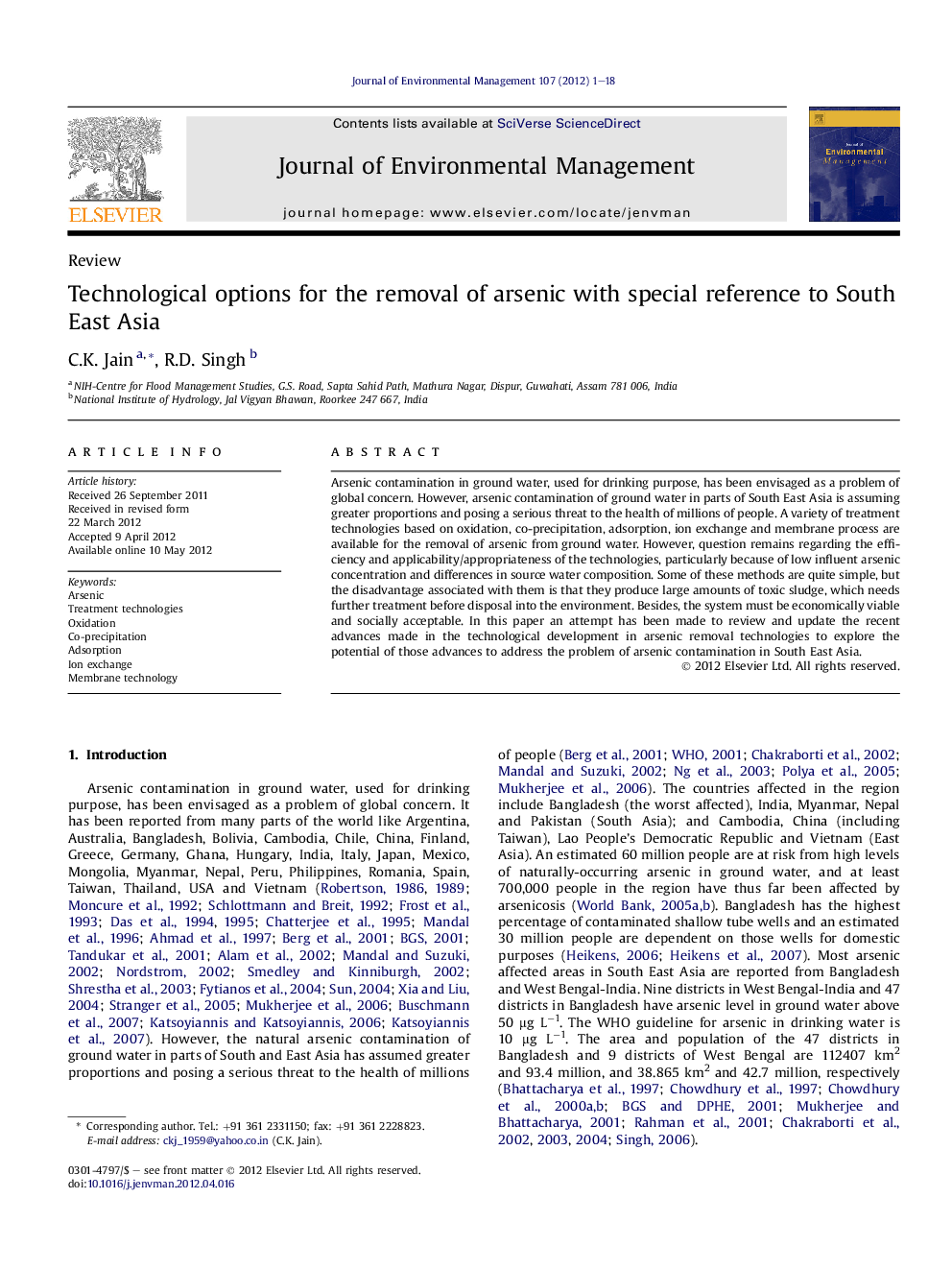| Article ID | Journal | Published Year | Pages | File Type |
|---|---|---|---|---|
| 1056658 | Journal of Environmental Management | 2012 | 18 Pages |
Arsenic contamination in ground water, used for drinking purpose, has been envisaged as a problem of global concern. However, arsenic contamination of ground water in parts of South East Asia is assuming greater proportions and posing a serious threat to the health of millions of people. A variety of treatment technologies based on oxidation, co-precipitation, adsorption, ion exchange and membrane process are available for the removal of arsenic from ground water. However, question remains regarding the efficiency and applicability/appropriateness of the technologies, particularly because of low influent arsenic concentration and differences in source water composition. Some of these methods are quite simple, but the disadvantage associated with them is that they produce large amounts of toxic sludge, which needs further treatment before disposal into the environment. Besides, the system must be economically viable and socially acceptable. In this paper an attempt has been made to review and update the recent advances made in the technological development in arsenic removal technologies to explore the potential of those advances to address the problem of arsenic contamination in South East Asia.
► Management of arsenic-contaminated water is a serious challenge to civil authorities. ► The paper highlights recent advancements made in arsenic removal technologies. ► Operational as well as mechanistic aspects of arsenic removal technologies discussed. ► The arsenic removal technologies may improve further through people' participation.
